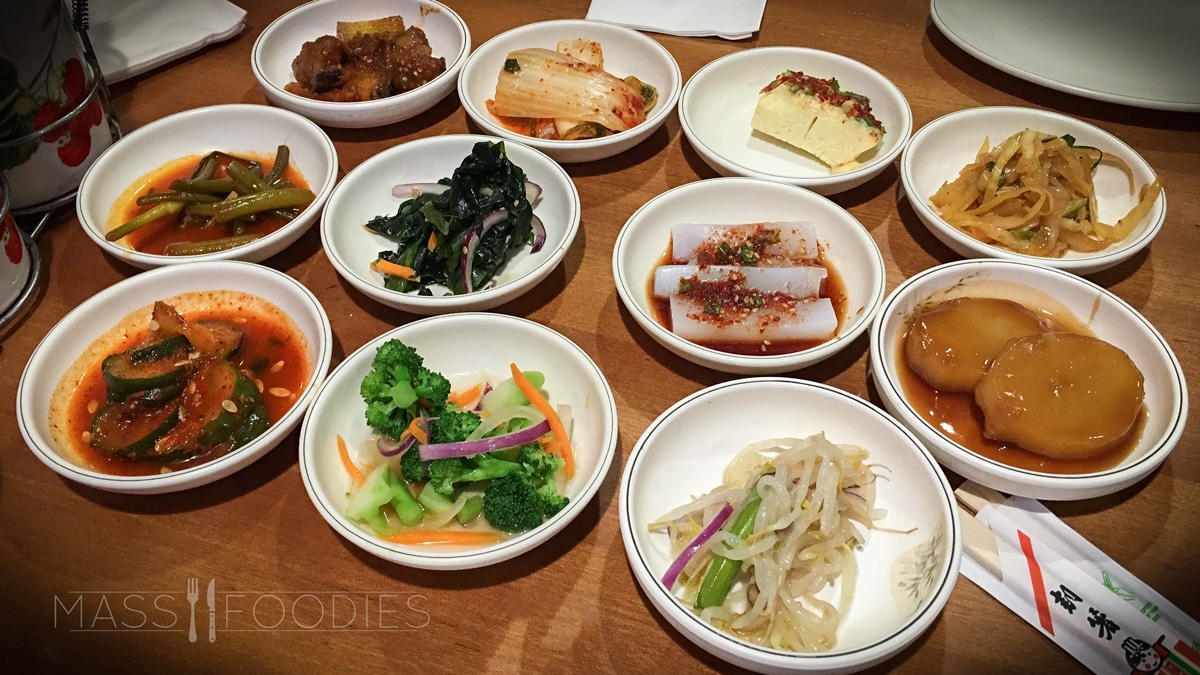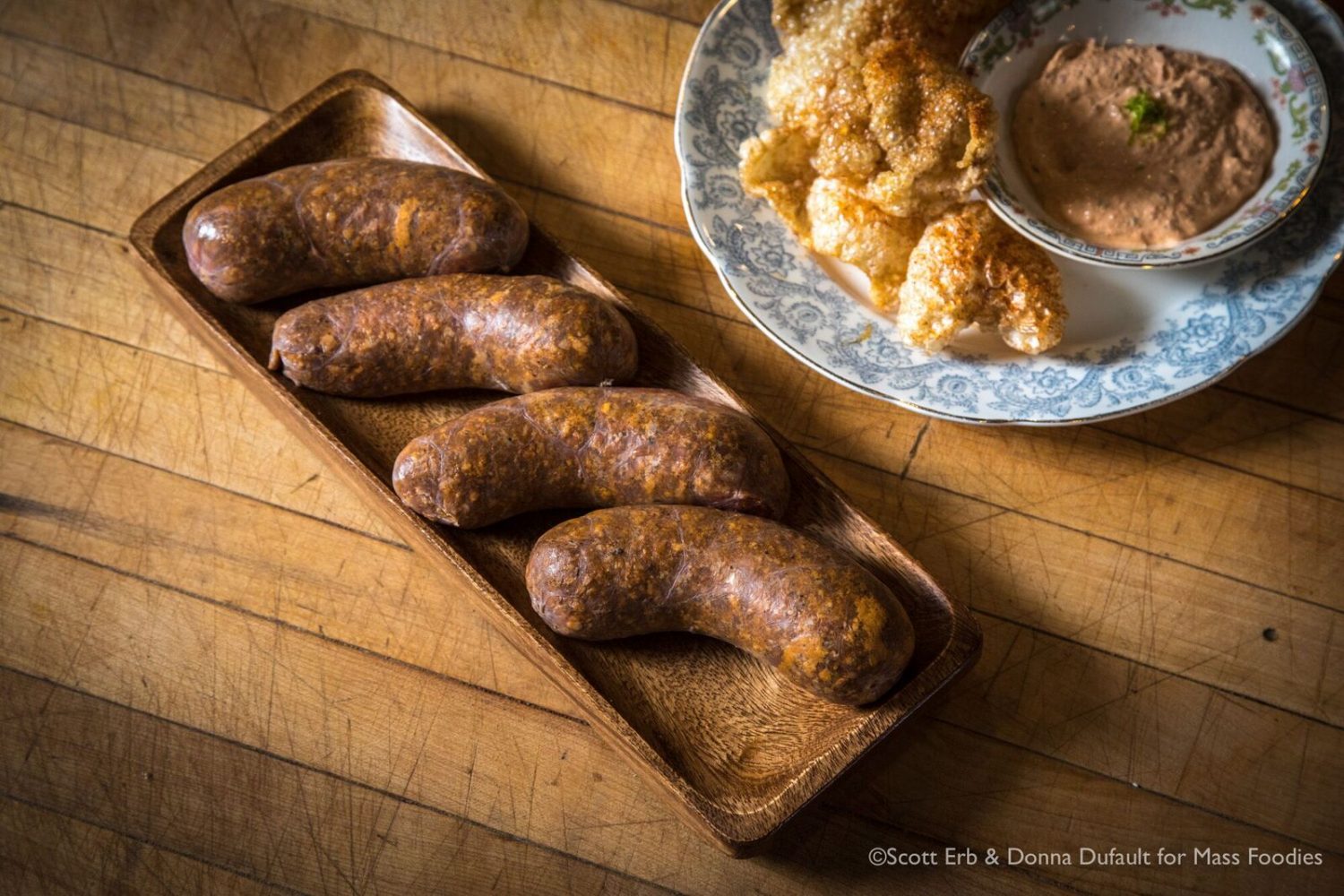
Sausage is the king of meats. While any grill-jockey can fry a steak, it takes a salumist to make sausage. This is not just the act of cooking, but actually physically making sausage; assembling the delicate dance of fat and flavor. From the familiar to the foreign, literally, every country on earth produces a form of sausage. Sausage is a way to preserve, a way to extend limited resources, and a way to work with what you’ve got. You’ve got blood, make blood sausage. You got face-meat? Make face-meat sausage.
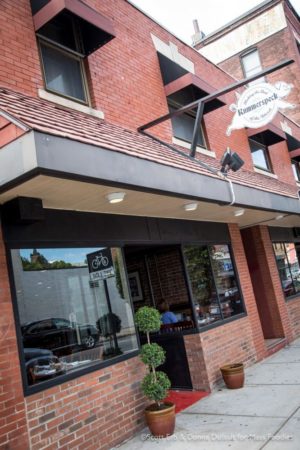
Massachusetts, oddly enough, has a fairly impressive sausage presence. The true awe-inspiring Blue Seal Kielbasa is made in Chicopee, the plucky Kayem hot dog is made in Chelsea, and the indomitable Karl’s Sausage Kitchen in Peabody. And Worcester itself has a rich and colorful history of sausage making in its own right. This history of Polish and Italian sausage makers is one of the reasons why Matt Mahoney and Rachel Coit chose to open the new Water Street restaurant Kummerspeck in Worcester.
Aside from being a bang-up restaurant, these kids are running one of the best butcher shops in the city, which is appropriate as they’re in the old Tom’s Deli storefront. They’re making their own sausage, curing their own bacon, making their own charcuterie, selling duck fat and house-made head-cheese. I sat down with Matt Mahoney, the Sausage King of Worcester – an Abe Froman level tribute of Ferris Bueller notoriety. We talked sausage and tried some of the best house-made meats in the city.
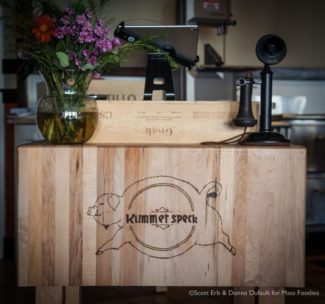
“The sausage world is huge,” said Mahoney. “It’s every country, most every culture is sticking meat in tubes. You can sausage anything: lamb, pork, veal, beef, chicken, and even fish.”
Essentially the theory of sausage is all the bits that were too small to serve, too small to cook, too valuable to throw out, are combined and packaged. It’s ground up, mixed with spices and stuffed into “casing.” Yes, that almost always means intestine. “Delicious, delicious intestine,” said Mahoney. “It’s a neutral thing, it’s your blank slate. Your paint is filling and how you preserve it.”
“The filling is the moneymaker. That’s where you’re putting in flavor, that’s the recipe,” said Mahoney. “I tend to use an existing recipe and try to dial it into my taste.” The filling is the difference between a hot dog and a chorizo, between a bratwurst and a baloney. “It used to be the offal, the organ meat, and bits of meat. It all gets chopped and ground into sausage filling. Today there’s not much organ meat or cartilage being sold out there.”
Matt produces a plate with four different sausages from the kitchen: a chorizo, a hot Italian, a smoked kielbasa, and a bratwurst. Three are fresh sausage, the fourth, the kielbasa, is smoked. Some sausage is preserved, like our kielbasa. The rest are fresh and need to be refrigerated.
Sausage is preserved in many ways. Smoked, cured, or drying. “Essentially water equals life,” said Mahoney. “So whatever you’re doing, smoking or whatever, you’re essentially trying to pull water out of the sausage. But you need that fat in there to keep it moist when cooking.”
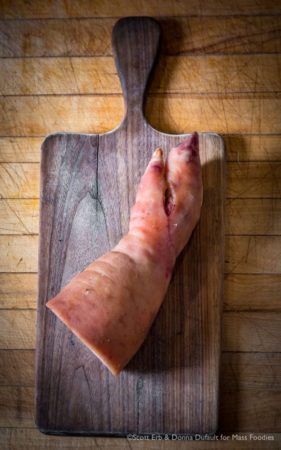 Matt and I talked as we worked our way through each of the sausages in front of us. It was all familiar, but better. The kielbasa, the hot Italian, and the bratwurst, but you know… the best kielbasa you’ve ever had. We discussed the amount of fennel in the hot Italian, how the smoking process is necessary for kielbasa to get a good snap from the skin, and the bratwurst was a traditional recipe veal and pork mix and very dense. The star of the show was undoubtedly the chorizo. A Cuban style chorizo, it was a fresh sausage and loaded with spice and cilantro. Matt got a hang-dog look on his face and admitted, “Yeah…that’s an Erin Hockey original.”
Matt and I talked as we worked our way through each of the sausages in front of us. It was all familiar, but better. The kielbasa, the hot Italian, and the bratwurst, but you know… the best kielbasa you’ve ever had. We discussed the amount of fennel in the hot Italian, how the smoking process is necessary for kielbasa to get a good snap from the skin, and the bratwurst was a traditional recipe veal and pork mix and very dense. The star of the show was undoubtedly the chorizo. A Cuban style chorizo, it was a fresh sausage and loaded with spice and cilantro. Matt got a hang-dog look on his face and admitted, “Yeah…that’s an Erin Hockey original.”
Erin Hockey. Lady Butcher? Meat Queen? Sausage Maven? How do you describe this woman? In short, when you visit she’ll be the woman behind the butcher block wielding a mallet and a cleaver…and possibly a pig head. “I can make sausage and parallel park,” she said. And in my sausage-induced daze, I’m pretty sure I hugged her. It was very emotional. The sausages were that good.
It was scrap meat, organ meat, things that would otherwise have been wasted. It is the most basic expression of necessity, of doing what cooks have done for thousands of years, of simply working with what they had to make something delicious out of bits of meats and entrails that might otherwise go uneaten or discarded. And though it has refined itself since its humble origins, now is the time to revisit the much maligned and overlooked sausage. From Coney Island to the sausage-dancing man on the side of Golemo’s on Millbury Street, Worcester is a sausage city and the lowly sausage deserves your attention. Yes, the sausage world is huge and sometimes intimidating but with this team, you’re in good hands.

